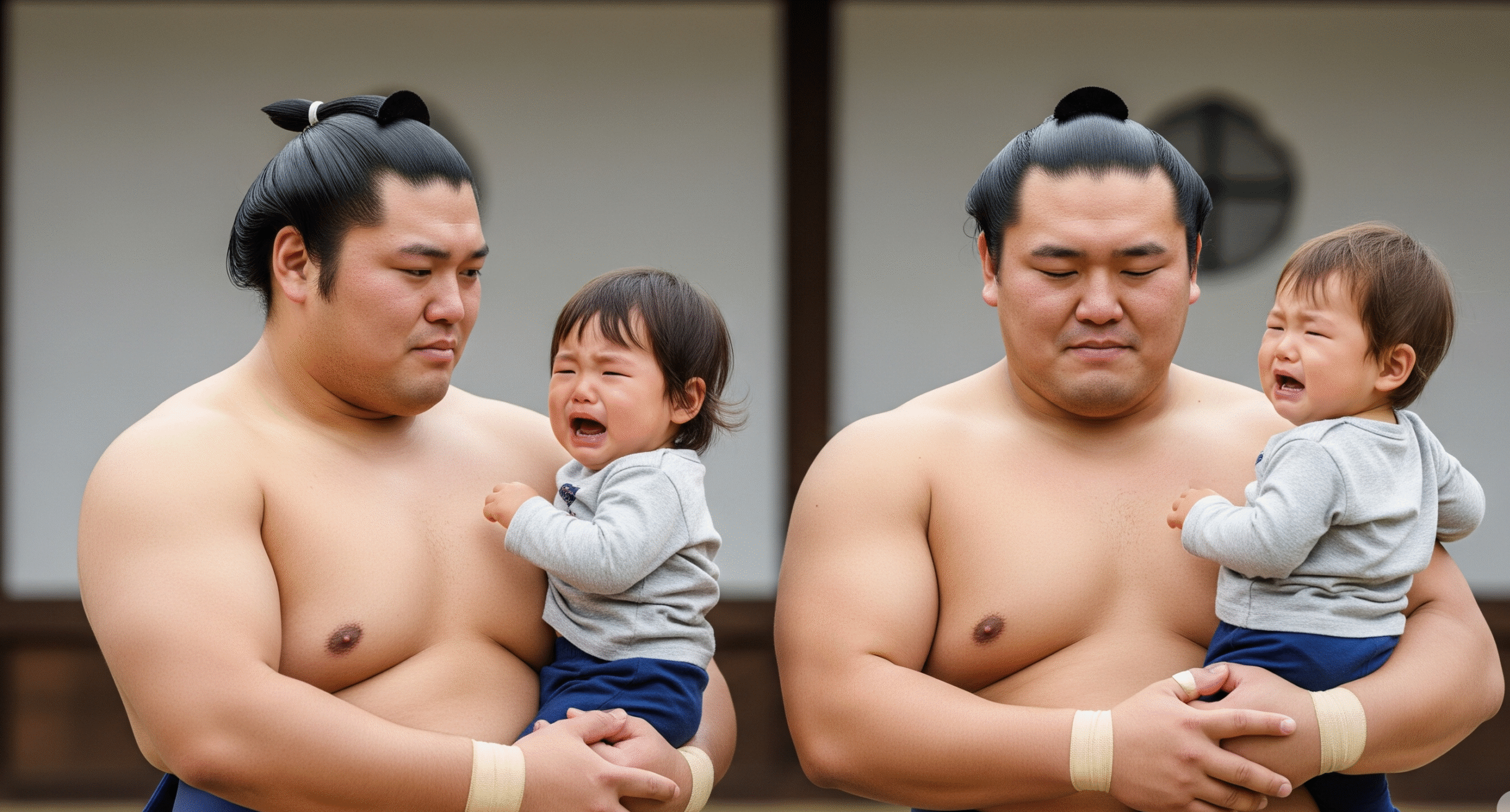Naki Sumo: Japan’s Baby Crying Sumo Ritual

📍 Where does it take place?
- Naki Sumo is held at shrines and temples across Japan.
- One of the most famous venues is Sensoji Temple in Tokyo, but it’s practiced in many regions.
Often tied to local festivals or special baby blessings.
📅 When does it happen?
- Mostly in spring (April–May), though the dates differ depending on the shrine.
Some places hold it as part of Children’s Day celebrations (May 5th).
🥋 What actually happens?
- Two babies aged around 6–18 months are placed in a small sumo ring (土俵 / dohyō).
- Sumo wrestlers or attendants gently hold the babies, facing each other.
- The goal? Get them to cry first — because the baby who cries first is the winner!
If neither cries, the wrestlers may wear scary masks or shout playful “Naki! Naki!” to encourage tears.
🎯 What’s the meaning behind it?
- In Japan, a strong cry is seen as a sign of health and good fortune.
- The ritual is a traditional prayer for the child’s healthy growth and protection from evil.
- It’s believed that the louder the baby cries, the better their future well-being.
Some call it “crying for good luck.”
🧑👩👦 Do parents actually want their baby to cry?
- Yes! Even though it may seem odd, parents proudly bring their babies to take part in the ritual.
Many dress their children in cute outfits and see it as a milestone in their baby’s early life.
📸 A Social Media Favorite
- The event draws big crowds and media attention.
- The mix of serious-faced sumo wrestlers + crying babies is both emotional and oddly adorable.
Every year, photos and videos from Naki Sumo go viral on Instagram, YouTube, and TikTok.
💡 Fun Fact:
- The tradition has been practiced for over 400 years in some regions.
Some matches even end with both babies crying at the same time, and the louder one gets the win!
🌸 Why it matters today
- Naki Sumo is more than just a cute event—it’s a living piece of Japanese cultural heritage.
- Even in the modern age, it reflects how traditions continue to adapt and connect generations.